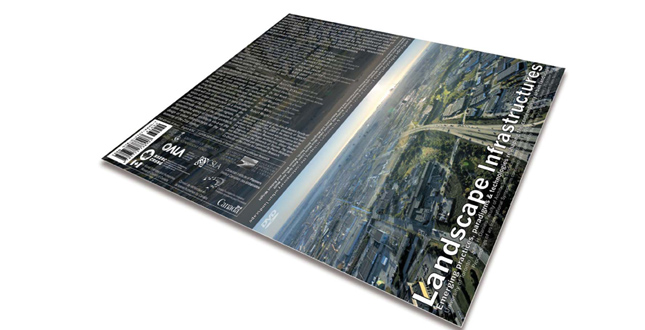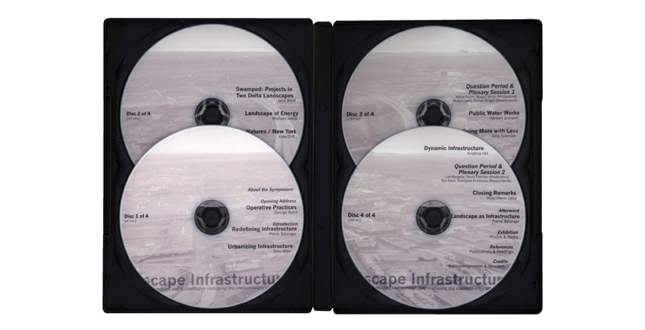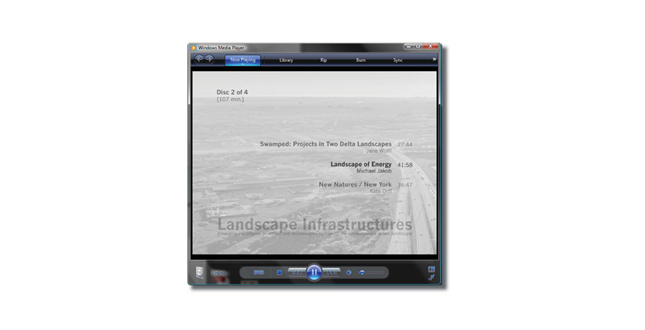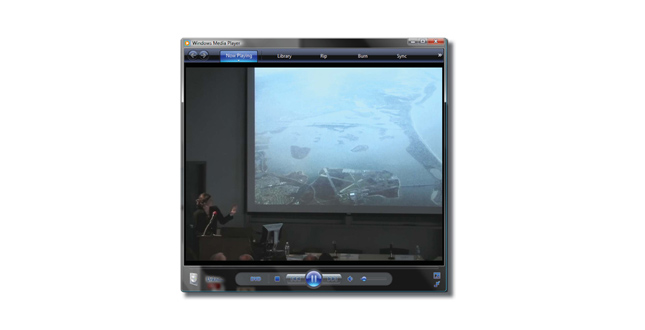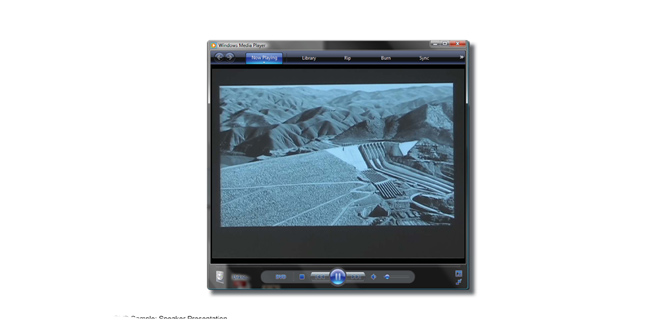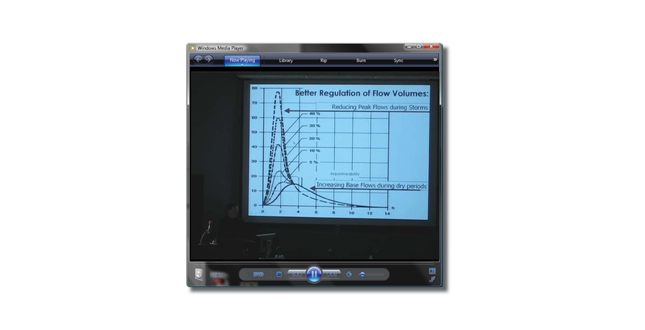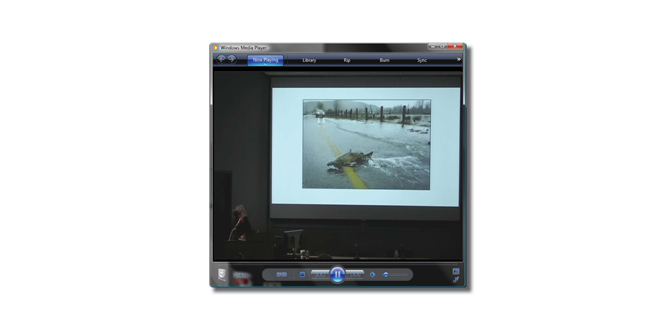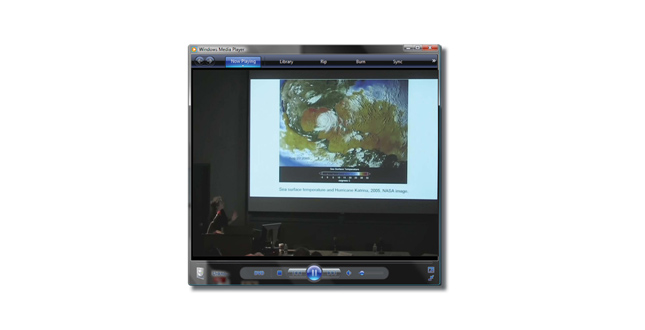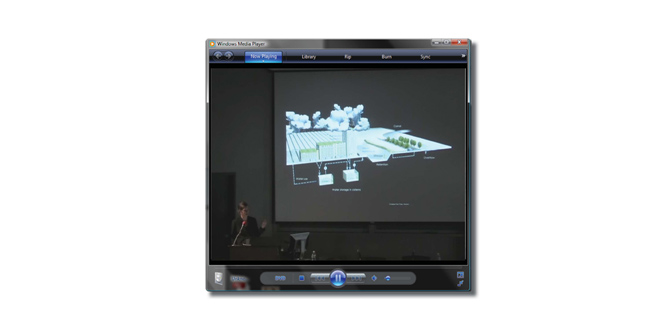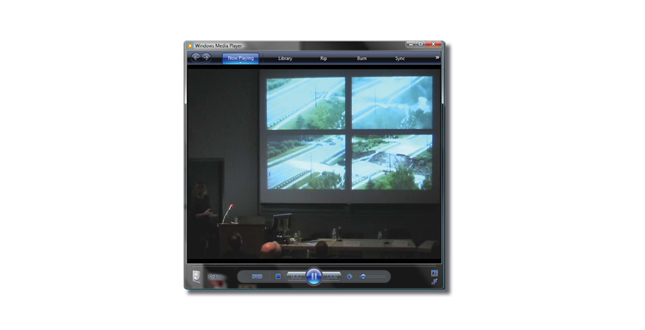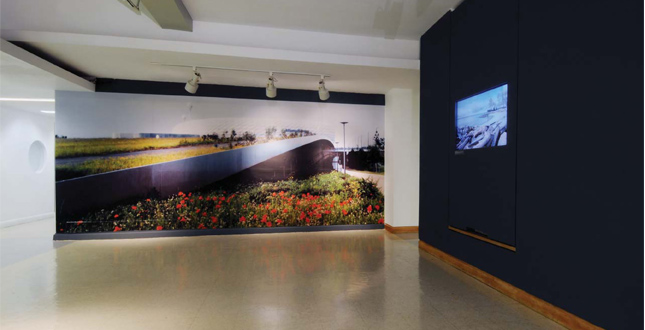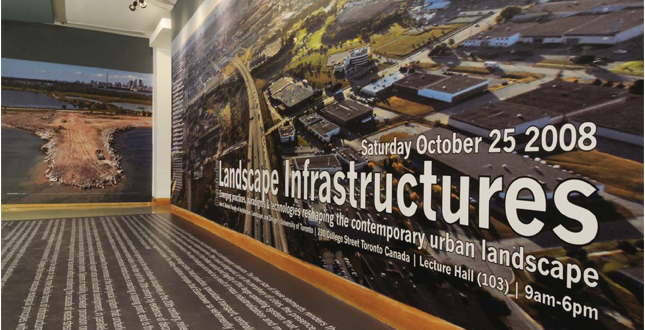Honor Award
Landscape Infrastructures
Emerging Practices, Paradigms & Technologies Reshaping the Contemporary
Urban Landscape
University of Toronto John H. Daniels Faculty of Architecture, Landscape, and Design, Toronto
Client: Landscape Architecture Canada Foundation, Canada National Research Council
Project Statement
Responding to the unchallenged predominance of civil engineering and the growing inertia of urban planning, this project redefines the conventional role of infrastructure in the future of urban regions. Foregrounding and augmenting the landscape of living, biophysical systems marginalized by the divide between the economy and ecology in big cities, this project repositions the field of landscape as a complex, instrumental system of essential processes, resources and ecologies that underpin contemporary urban economies.
Project Narrative
—2010 Professional Awards Jury
Cities are sustained by infrastructure. Highways, airports, power plants and landfills largely figure as the dominant effigies of contemporary urbanism. The sheer size of these elements renders their understanding as a single system practically impossible, yet their operations depend precisely on their continuity to support urban and industrial economies. Often found underground, or on the periphery of cities, the presence of infrastructure remains largely invisible until the precise moment at which it breaks down or fails. Floods, blackouts and shortages serve as a few reminders of the limited capacity and fragility of this large operating system that unilaterally depends on technical knowledge and hierarchical control for its sustenance. Made evident during the 20th century, a massive transformation of the urban landscape occurred as a result of mass industrialization and mass mobility.
In the 20th century, large-scale infrastructure projects were undertaken throughout the continent and were premised on water supply, drainage control, food production, specialized transport, centralized energy and continental defence to support an array of functions unilaterally premised on Fordist and Taylorist dogmas of productivity, management and speed. The military-industrial complex that Eisenhower so vehemently warned of, simultaneously led to nationalized economies largely dependent on the extraction of coal, the distribution of oil and the production of steel.
These projects irreversibly generated a system of industrialized landscapes which, with the prominence of civil engineering as the most influential disciplines in the 20th century, relied on the centralization of control and the specialization of knowledge. The long-term effects of singularly engineered structures and industrial systems were rendered visible in the latter half of the 20th century by evidence of decay, resource exhaustion, ground contamination and air pollution. With increasing rates of urbanization and mobile populations worldwide, the capacity of conventional, centralized infrastructures is reaching a tipping point, and is therefore being re-questioned.
From an ecological perspective, the generic, technological apparatus of modern infrastructure has largely overshadowed the preeminence of the biophysical system that underlies it. Due to their magnitude and their complexity, hydrological, geological, biological and climatic agents that make up this system are often overlooked, yet they unequivocally support urban and industrial development, in parallel with global economic forces. Today, these new challenges are generating alternative strategies that combine the demands for urban infrastructure with underlying biophysical systems. Systems of mobility, freshwater provision or sewage support for example, can no longer be designed without the regional understanding of hydrological systems. Food production or energy generation can no longer be planned without considering the cascade of waste streams and resource inputs.
Signaling a departure from centralized forms of urban development and the predominance of civil engineering in the design of cities, more flexible forms of infrastructure and design practices have begun to emerge during the past decade as a response to the increasing demand for renewable and integrative forms of urban development. Strategies that combine landscape ecological principles with urban infrastructure are now rapidly becoming the dominant order of infrastructural development for industries as well as cities.
Foregrounding the reciprocity between landscape and infrastructure, this international symposium and exhibition gathered a series of influential thinkers and practitioners from around the world to discuss emerging practices, paradigms and technologies that are reshaping the contemporary urban landscape. Reexamining the historically divisive, technocratic nature of engineered infrastructure, the symposium reformulated a more synthetic vision of urban infrastructure as a landscape that combines ecological and economic imperatives of big cities. The penultimate objective of the symposium is to reposition the agency of landscape architects vis-à-vis the design and planning of urban infrastructures for the new economy of the 21st century.
About the DVD
The DVD presents the proceedings of this international symposium supplemented by an array of reference material for students, educators, researchers and professionals in the interrelated fields of design, planning, engineering and public administration. The four-disc set includes biographies and lecture presentations by Stan Allen, George Baird, Pierre Bélanger, Julia Czerniak, Herbert Dreiseitl, Kristina Hill, Michael Jakob, Nina-Marie Lister, Kate Orff and Jane Wolff as well as plenary discussions with Rodolphe El-Khoury, David Fletcher, Ted Kesik, Robert Levit, Liat Margolis, Alissa North, Mason White and Robert Wright. Reviewed by an adjudication committee of renowned scholars, the proceedings are accompanied by a comprehensive list of reference readings on the converging fields of landscape and infrastructure. For librarians and archivists, the DVD comes with CIP data, ISBN and UPC code for cataloging purposes. The DVD also features a comprehensive afterword that proposes future directions for research and practice.
About the Distribution
The original edition, published in July 2009, is limited to 500 copies distributed worldwide. The DVD disc set is now available on demand through a series of online distributors in North America including the Harvard University Bookstore, the Canadian Centre for Architecture, the University of Toronto Bookstore, and in Europe, including Architectura & Natura (Amsterdam, the Netherlands).
To date, no other school of Design, Engineering, Environment or Economics in the world has formally addressed the pressing issues related to urban infrastructure employing a landscape perspective. As a unique communication device, the DVD repositions the agency of landscape architecture as the global discipline of choice in the reclamation of the discourse on infrastructure for designers, planners, engineers, scientists and policy makers.
Project Resources
Organization & Conception
Pierre Bélanger, ASLA
Organizational Support
Open Systems, Centre for Landscape Research, Landscape Infrastructure Lab
Review Committee
George Baird, Ted Kesik, Charles Waldheim, Robert Wright
Funding & Sponsors
John H. Daniels Faculty of Architecture, Landscape, and Design, the University of Toronto Connaught Fund, the Ontario Association of Landscape Architects (OALA), the Landscape Architecture Canada Foundation (LACF), the Canada Foundation for Innovation (CFI), the Social Sciences & Humanities Research Council (SSHRC) and National Research Council Canada, the Natural Sciences & Engineering Research Council (NSERC) and the Canadian Institute of Planners (CIP)
Speakers
Stan Allen, George Baird, Pierre Bélanger, Julia Czerniak, Herbert Dreiseitl, Kristina Hill, Michael Jakob, Nina-Marie Lister, Kate Orff, ASLA, Jane Wolff
Moderators
Aziza Chaouni, David Fletcher, Liat Margolis, Alissa North, Mason White
Respondents
Rodolphe El-Khoury, Ted Kesik, Robert Levit, Robert Wright
Communications
Nene Brode
Administrative Support
Komala Prabhakar, Zita da Silva, Ana da Silva Borges, Bryn Dhir, Nimmi Mathanda
Technical Support
Johnny Bui, John Howarth
IT Support
Maxim Batourine, Charles Cox, Yuri Lomakin
Video Editing & Formatting
Master2DVD (Adam Finley, Karen Lacampuenga)
DVD Design
Open Systems
Exhibition Layout & Concept
Open Systems /Bélanger
Surface Mounting
Fadi Massoud, Shadi Khatami, Jacqueline Urbano (Video), Hoda Matar, Talal Rahmeh, Drew Adams, Alessandro Colavecchio, Wei Pang, and Zhi Xiao
Surface Preparation
Johnny Bui, Larry Norris, Eugene Mastrangeli
Image Credits
Pierre Bélanger, International ASLA, Jacqueline Urbano, Vogt Landschaftarchitekten/Olaf Unverzart, Liat Margolis & Alexander
Printing & Lamination
Lamin-8 Services (Toronto)
Materials
Poly Satin & Scuff Resistant Vinyl Surfacing
Exhibit Photography
John Howarth
ISBN 978-0-7727-8820-7
DVD 439 min. (four-disc set) English NTSC







